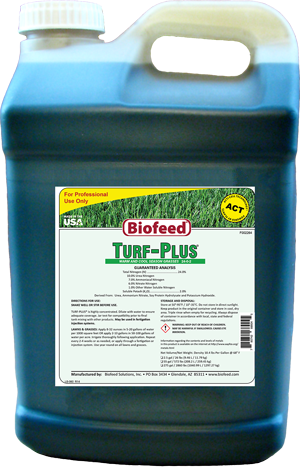OVERSEEDING YOUR LAWN
Overseeding Your Lawn. Throughout the spring and summer, your grass grew lush, beautiful, and green. Now, autumn approaches, and soon, your lawn will grow dormant for the winter. This does not mean that you are free from taking care of your grass for the next few months until spring returns.
With careful planning and overseeding, your lawn can remain beautiful year-round.
After a harsh summer, even the best-cared for lawns may have portions of the grass die and whither due to drought, extreme heat, or disease. Overseeding is a process where you put new grass seeds over an existing lawn. Overseeding allows for winter turf grass establishment.
AUTUMN LAWN PREPARATION
For best results, wait to overseed until nighttime temperatures consistently remain in the 60 degree range.
Overseeding can be done for both warm-weather and cool-weather grasses. With overseeding, you can use a cool-season grass to keep your lawn green year round.
To overseed your lawn, follow the following steps:
1. MOW YOUR GRASS
Mow as short as you can, almost scalping the lawn. For your new seeds to grow and take root there should not be competition with the older grass. Cutting your lawn as close as you can will help stimulate the growth of your new grass. The older grass will be dormant throughout the cold months, and allowing the blades of the older grass to remain long can choke your new growth.
2. CLEAN UP YOUR LAWN
Remove the debris from fallen leaves, branches and lawn clippings. Yard debris invites harmful insects and spreads plant disease to otherwise healthy grass.
3. AERATE YOUR LAWN
Aerating will improve the oxygenation to the roots of your newly grown grass, allowing your lawn to grow faster. Aerating will allow for improved germination for your winter turf grass.
4. SEEDING
Spread the seeds across the desired area. Spread the seeds in two directions, half in one direction and the other half perpendicular to the first direction to help avoid overlapping and to ensure more even coverage.
Perennial rye grass is the recommended winter grass for Arizona because it grows well with our winter weather and will die in the summer, allowing your summer lawn to grow. The recommendation is to use at least 4 lbs of rye grass per 1,000 square feet of lawn.
5. WATER YOUR LAWN!
 Water your newly winter lawn area lightly, up to five times a day for a week to ten days. Make sure you leave no puddles or dry areas in the yard, and cover the entire area that has been seeded. To help fertilize your lawn and ensure that the water gets deep into the roots, use Biofeed Turf-Plus nitrogen rich liquid grass food. Turf-Plus helps stimulate root growth.
Water your newly winter lawn area lightly, up to five times a day for a week to ten days. Make sure you leave no puddles or dry areas in the yard, and cover the entire area that has been seeded. To help fertilize your lawn and ensure that the water gets deep into the roots, use Biofeed Turf-Plus nitrogen rich liquid grass food. Turf-Plus helps stimulate root growth.
After two weeks, water only one time per day. Once the winter lawn has begun to grow, you may resume watering every other day, or as needed.
6. DO NOT MOW YET!
After seeding and watering your grass, wait at least 14 days after germination before trimming your lawn. Don’t cut the new grass shorter than 0.75”-1.0”.
It is also advisable to protect your new grass from foot traffic until after it has been established.
ONCE YOU HAVE YOUR WINTER LAWN, DO NOT STARVE IT!
Continue watering and using fertilizers, like Turf-Plus, to maintain your healthy green lawn year-round.
Turf-Plus is a natural, organic based fertilizer that is rich with biostimulants and vitamins. It is designed to help increase your soil’s health and your grass’ resistance to disease while stimulating growth, turf density and root depth.


